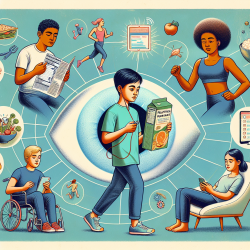The Surprising Truth About Digital Interventions for Youth Substance Use
In the evolving landscape of substance use interventions, digital technologies have emerged as a promising avenue for reaching young people. A recent rapid review by Monarque, Sabetti, and Ferrari (2023) sheds light on the current state of digital interventions aimed at addressing substance use disorders among youth. The findings offer valuable insights for practitioners looking to enhance their skills and understanding in this critical area.
Understanding the Landscape
The review identified 43 studies describing 39 different digital interventions, with the majority focusing on early interventions. Web-based technologies were the most common, followed by game-based and mobile-based interventions. Interestingly, virtual reality, despite its potential, was underutilized, highlighting an area ripe for further exploration.
Target Substances and Intervention Approaches
Alcohol was the most frequently targeted substance, reflecting its prevalence among youth. However, other substances like tobacco, cannabis, and opioids received significantly less attention. This gap underscores the need for a broader focus in digital interventions, particularly as the opioid crisis continues to escalate.
Most interventions employed feedback mechanisms, often using a social norms approach to correct misperceptions about peer substance use. However, the review noted a lack of interventions utilizing harm reduction approaches, which are essential for creating non-stigmatizing and effective treatment environments.
Implications for Practitioners
For practitioners, the review highlights several key areas for improvement and exploration:
- Broaden the Focus: Expand interventions to include a wider range of substances, particularly tobacco, cannabis, and opioids.
- Incorporate Harm Reduction: Develop interventions that integrate harm reduction principles to better meet the needs of young people.
- Leverage Technology: Explore the potential of virtual reality and game-based interventions to enhance engagement and effectiveness.
Moving Forward
The review by Monarque et al. (2023) provides a comprehensive overview of the current state of digital interventions for youth substance use. It calls for a more diverse and inclusive approach to intervention development, emphasizing the need for harm reduction and broader substance focus.
To read the original research paper, please follow this link: Digital interventions for substance use disorders in young people: rapid review.










